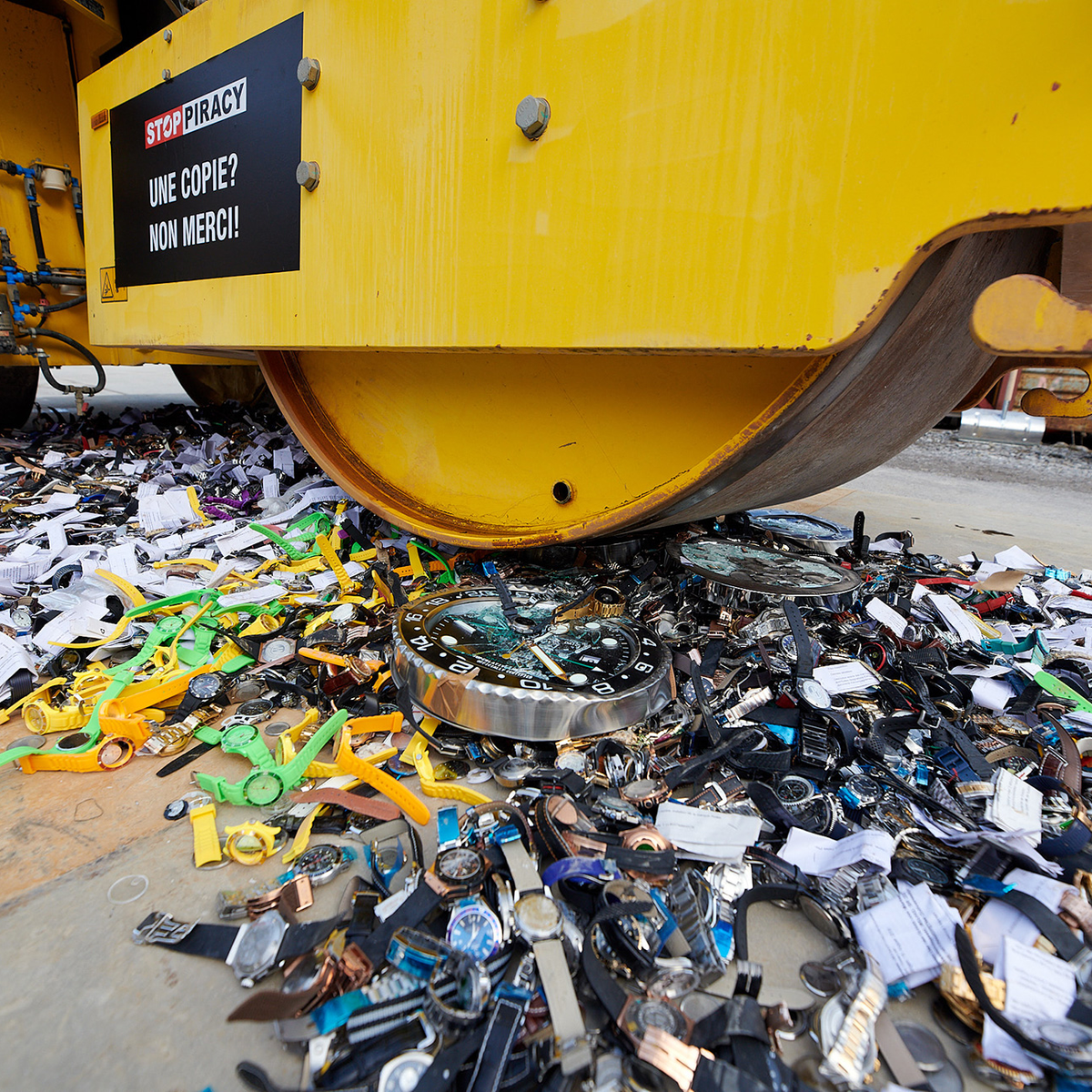Counterfeiting “costs” the Swiss watch industry CHF 2 billion. Counterfeiting “costs” the Swiss watch industry CHF 2 billion. Counterfeiting “costs” the Swiss watch industry CHF 2 billion. Counterfeiting “costs” the Swiss watch industry CHF 2 billion. Counterfeiting “costs” the Swiss watch industry CHF 2 billion
Counterfeiting “costs” the Swiss watch industry CHF 2 billion. Counterfeiting “costs” the Swiss watch industry CHF 2 billion. Counterfeiting “costs” the Swiss watch industry CHF 2 billion. Counterfeiting “costs” the Swiss watch industry CHF 2 billion
29 March 2021
Counterfeiting “costs” the Swiss watch industry CHF 2 billion
A recent OECD report shows that the watch industry is the main victim of the trade in counterfeit “Swiss” goods, losing CHF 2 billion a year in foregone sales.
Last week the OECD published the conclusions of “Counterfeiting, Piracy and the Swiss Economy”, a report commissioned by the Swiss Federal Institute of Intellectual Property. Its findings - “Illicit trade in counterfeit goods is a critical threat, damaging Swiss rights holders, the Swiss government and society as a whole” – are unequivocal though, regrettably, not entirely unexpected. Switzerland is one of the most innovative nations in the world whose knowledge-based economy produces high value products and services that draw considerably on intellectual property, and this makes the country “vulnerable to the global risks of counterfeiting and piracy”, to quote the report whose investigations, based on 2018 and 2019, confirm the scale of the problem.
In 2018 world trade in counterfeit and pirated goods infringing Swiss intellectual property rights amounted to CHF 7 billion or 2.3% of genuine exports. Right holders’ legitimate sales were reduced by CHF 4.5 billion while the Swiss government was deprived of CHF 160 million in tax revenue. It also led to more than 10,000 job losses or 1.7% of all Swiss manufacturing jobs. And watchmaking takes an unenviable “first place”, with global trade in fake “Swiss” watches amounting to CHF 3.35 billion in 2018, equivalent to 48% of the total value of Swiss counterfeit goods. For Swiss watch brands, this translates into CHF 2 billion of foregone sales.
The Swiss watch industry takes an unenviable “first place” for lost sales due to counterfeiting.
Estimated lost sales for Swiss manufacturing industries (2018)
The market for “Swiss” counterfeit watches is demand-driven.
“The OECD report on the damage counterfeiting does to the Swiss watch industry puts precise figures on our estimates,” says Jean-Daniel Pasche, at the head of the Federation of the Swiss Watch Industry (FH). “Counterfeiting is damaging to our companies, our jobs, our public finances and our welfare and health systems. The consequences on the watch industry alone are devastating, in terms of lost revenue but also reputational risk. People who knowingly buy counterfeit goods need to realise they are supporting criminal organisations and contributing to a traffic in which child labour is not rare.”
Predictably, counterfeit goods that infringe Swiss intellectual property rights originate mainly from China, Hong Kong and, more recently, Turkey and Singapore. To get their products to markets, counterfeiters misuse all types of international transport. Sea containers and express cargo carry the most counterfeit goods in total value. Small parcels sent by mail or private delivery services transport the most in terms of number. Nor is it always a case of “buyer beware”: 55% of people buying counterfeit “Swiss” watches know that they are purchasing a cheap fake or so-called replica, notes the report.
The bad news, where watchmaking is concerned, is that “the market for “Swiss” counterfeit watches is demand-driven. Counterfeiters react very quickly to changes in the demand for fake watches and have the capacity to adapt their offers on an industrial scale.” The digital environment must take its share of the blame, too, with locked-down populations turning to online markets. While the coronavirus pandemic has aggravated this trend, the OECD concludes that its impact has been “moderate” in terms of absolute volumes. For the FH, these are all reasons to step up its anti-counterfeiting actions, whether seizure operations, shutting down websites or training police and customs officers. Not forgetting campaigns to raise awareness among consumers, the real driving force behind this illicit trade.
